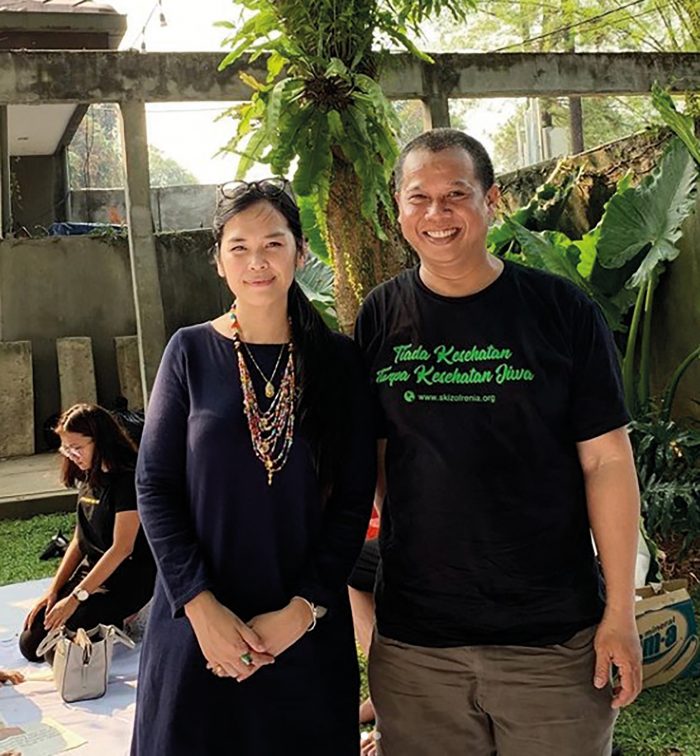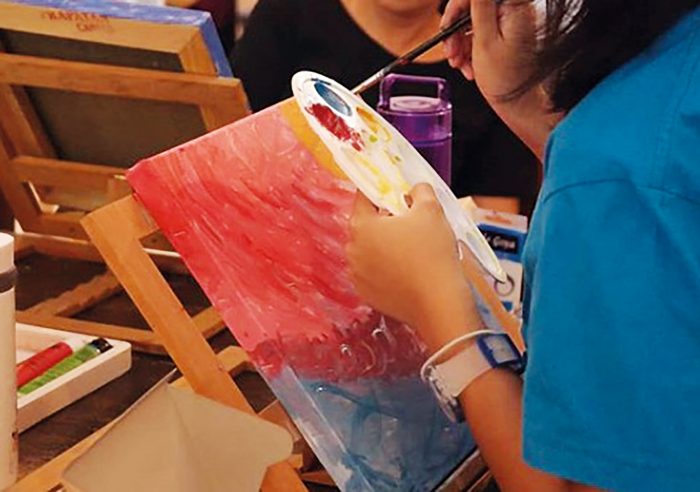Boredom can get the best of people, leading them to escape into old, forgotten hobbies and to discover new skills. Boredom sets in when someone feels energetic but has nowhere to channel that energy, when they lose interest in a project when focusing on a task seems too difficult to do, or having to stay at home for a long, unclear period. Does that sound familiar?
Going into isolation has ignited people’s inner expression and it’s evident all over social media. Self-expression can take various forms such as writing, body movements, making music, and even curating artworks. Commonly, art has become the chosen medium. According to Positive Psychology, self-expression in many cultures is considered odd, selfish, or a waste of time. De la Huerta’s (2014) article argues that “self-expression is a vital piece of the puzzle that is fulfilment in life; it allows us to be our best selves, reach our full potential, and make valuable contributions to the world we live in. Authentic self-expression is how we embrace who we are, all the way from the positive traits and acts we keep on the surface, to the darker and less valued pieces of ourselves that we bury deep down.”
Maybe this isolation period has pushed your concentration towards various aspects of your life and the people dearest to you. Or maybe isolation has brought up unidentified, hidden wounds which you thought had diminished as time passed by, but somehow they’ve reappeared. Why not take this time in isolation to help yourself?
Art therapy is a therapy involving the use of creative techniques, such as drawing, painting, collage making, and colouring to help people express themselves and examine psychological conditions through artwork. Believably, according to Psychology Today, “art therapy is thought to make the patient’s therapy better as they understand their deepest feelings and emotions.” An art therapist’s role is therefore to identify the code, symbols, metaphors, and nonverbal messages illustrated in the artwork. This is an alternative method to combat an inner blockage for children, adolescents, and adults. Some benefits include stress relief, as well as a reduction in symptoms of anxiety and depression, and improvement of self-esteem.
Available in hospitals, medical centres, houses, prisons, social departments, and even online, the created artwork can be used as a stepping stone to revive memory and tell stories that can reveal a message and expose the mind of the human subconscious. Only a handful of certified art therapists in Indonesia have acquired a program of advanced psychology, which is a Master’s of Science in art concentration therapy with a curriculum of psychology courses – still unavailable in Indonesia. Compared to regular shrinks, an art therapist is a mental health professional who has been steeped in psychology, psychiatry, and art; they connect with people through arts for them to heal, find themselves, process their trauma, and develop their own sense of being. So, art therapists aren’t art teachers.
Mutia Ribowo SDs, AThR is one of the few certified art therapists in Jakarta. She runs Art+i Art Therapy in South Jakarta and cooperates with the same facility in North Jakarta, as well as psychologists and counsellors. “I specialise in teens and adults who have mental illnesses such as depression, bipolar disorder, borderline personality disorder, and self-harm. My partner Cindy, in North Jakarta, specialises in children from three to 12 years old who have a lack of confidence and social or family problems,” she explained. Those who don’t have alarming or acute symptoms don’t need to be diagnosed. “But if someone comes and the art therapist identifies signs of abuse or depression, we will immediately refer them to an adult clinical psychologist for assessment,” she added.
Art therapists don’t analyse an artwork based on the sophistication of their patient’s skills. Instead, they see the process from the beginning to the end of creating art; observing the gestures shown, the chosen colours, the strokes, the textures, the way pencils are held, and identify what an artwork means based on research and chats with the clients. “Colours and strokes are subjective. For example, the universal meaning of yellow is happy and brightness. But an art therapist would ask, what does yellow mean to you? The answer could be unhappiness,” Mutia asserted.
This form of therapy encourages patients to safely and comfortably express through their artworks, as opposed to solely relying on discussions. The first session comprises chatting between the patient and the therapist to identify the best kind of method to create the artwork. The therapist will then observe the process without making any judgments in advance. Afterwards, questions about the creative process and any difficulties or constraints endured, as well as feelings, will be asked.
Social media users are, more than ever, being expressive and sentimental through arts, music, and poetry which they curate themselves or share from other sources. “I sense more empathy towards one another,” Mutia said. Some artists actually express themselves against pain, numbness, and so on like Frida Kahlo, a surreal painter from Mexico who throughout her life painted self-portraits including depicting her health problems.
Mutia believed that positive feedback is always heart-warming, yet negative feedback will normally backfire. “We’re making a movement on self-expression through art on our Instagram page, so people can participate in art therapy for social action to stay at home and do artsy activities,” Mutia continued.
Mutia claimed that sessions had been conducted online prior to the coronavirus pandemic here, in cases where a patient had been living in other cities across the country and needed help. Patients can communicate with Mutia via WhatsApp or email, where elaboration on the process of the artwork is included. Moreover, sessions via Zoom include a similar sense of an art therapist around to observe the curating process from start to finish.
Neurologist Oliver Sacks, from England, stated in his study, “awakening, basically, is a reversal… The patient ceases to feel the presence of illness and absence of the world, and comes to feel the absence of his illness and the full presence of the world.”
Art in Mutia’s eyes is significant depending on the individual. “It depends on a person; if they like art and if they like to express themselves through art. Remember, self-expression can be cooking, writing, poetry, gardening, and so on! The most important point is the creative process for someone,” asserted Mutia.
ART+i Art Therapy Jakarta
Jl. Komp. Puri Sakti II No.9, South Jakarta.
Instagram: @arttherapyjakarta




